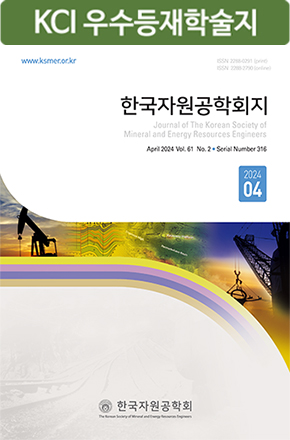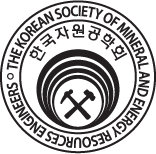Abstract
The Mugeuk mine was historically the largest gold-silver producer in South Korea, and yielded more than ten metric tons of gold with an average grade of about 8 g/ton Au . Ore deposits consist of more than 10 subparallel quartz-calcite veins that fill faults and fractures in Jurassic granodiorite and Cretaceous quartz porphyry. Veins formed during six successive hydrothermal events of Late Cretaceous age. Ore mineralogy of the veins is complex, consisting mainly of base-metal sulfides with electrum (23-51 atom. % Au), native silver, argentite and silver sulfosalts. Stage I veins do not contain gold and silver minerals. During stages II to V, economic quantities of gold and silver were precipitated. Stages III and IV represent the culmination of gold precipitation in distinct sulfide bands, whereas stage V represents a shift to dominantly silver deposition. Stage VI veins are post-ore barren quartz-calcite-fluorite. A variety of types of geochemical data indicate that deposition of gold and silver resulted mainly from cooling and mixing of ore fluids, accompanying successive incursions of meteoric water into the hydrothermal system. Fluid inclusion data show general decreases of temperature and salinity within each stage. Ore mineral assemblages indicate decreases in the fugacity of sulfur with decreasing temperatures during the deposition of gold and silver. Measured and calculated δ18O values of hydrothermal fluids decrease generally from +3.0 to 7.4‰ from stages II through VI, and δD values range from 66 to 84‰. The Au-Ag deposits at Mugeuk, in particular, mineralogy, Au/Ag ratios and fluid geochemistry, are the result of episodic meteoric water events within the granite-hosted hydrothermal system.
무극광산은 남한에서 역사적으로 가장 큰 금-은 생산지였으며, 평균품위 약 8g/ton의 금광석을 천만톤 이상 생산했었다. 본 광상은 쥬라기 화강섬록암과 백악기 석영반암내 발달한 단층과 열극을 충진하는 10개조 이상의 석영-방해석맥으로 구성되어 있다. 본 광상의 광맥은 백악기 후기 6회의 연속적인 열수활동 중 형성되었다. 맥내 광석광물의 조성은 복잡하며, 주로 에렉트럼(23-51 atom. % Au)을 수반한 황철석과 천금속 황화물, 자연은, 휘은석과 은황화염이 산출된다. 광화 1기 맥은 금과 은을 배태하지 않고, 광화 2기에서 5기 동안에는, 상당량의 금과 은이 침전되었다. 광화 3기와 4기는 뚜렷한 황화물대에서 금침전이 활발한 반면에, 광화 5기는 은 침전이 지배적이었다. 광화 6기 맥은 광화후기의 barren한 석영-방해석-형석으로 구성되어 있다. 다양한 지구화학적 자료에 의하면, 금과 은의 침전은 주로 광화유체의 냉각 및 희석작용에 의해서 야기되었으며, 열수계로 연속적인 천수가 유입되었다. 유체포유물 자료에 의하면, 광학작용이 진행되면서 온도와 염농도의 일반적인 감소를 보여준다. 광석광물 조합은 금과 은이 침전하는 동안 온도가 감소하면서 황분압의 감소를 지시한다. 열수유체의 산소안정동위원소 값은 광화 2기에서 6기로 진행하면서 +3.0 ~ -7.4‰ 까지 감소하고, 수소안정동위원소값의 범위는 -66 ~ -84‰이다. 따라서, 광물조성, 금/은비, 유체지구화학 관점에서 고려할 때, 무극 금-은광상은 화강암을 모암으로 열수계에 일시적인 천수유입의 결과로 생성되었을 것으로 사료된다.
References
Sorry, not available.
Click the PDF button.
Information
- Publisher :The Korean Society of Mineral and Energy Resources Engineers
- Publisher(Ko) :한국자원공학회
- Journal Title :Journal of the Korean Society for Geosystem Engineering
- Journal Title(Ko) :한국지구시스템공학회지
- Volume : 42
- No :5
- Pages :485-497



 Journal of the Korean Society of Mineral and Energy Resources Engineers
Journal of the Korean Society of Mineral and Energy Resources Engineers








